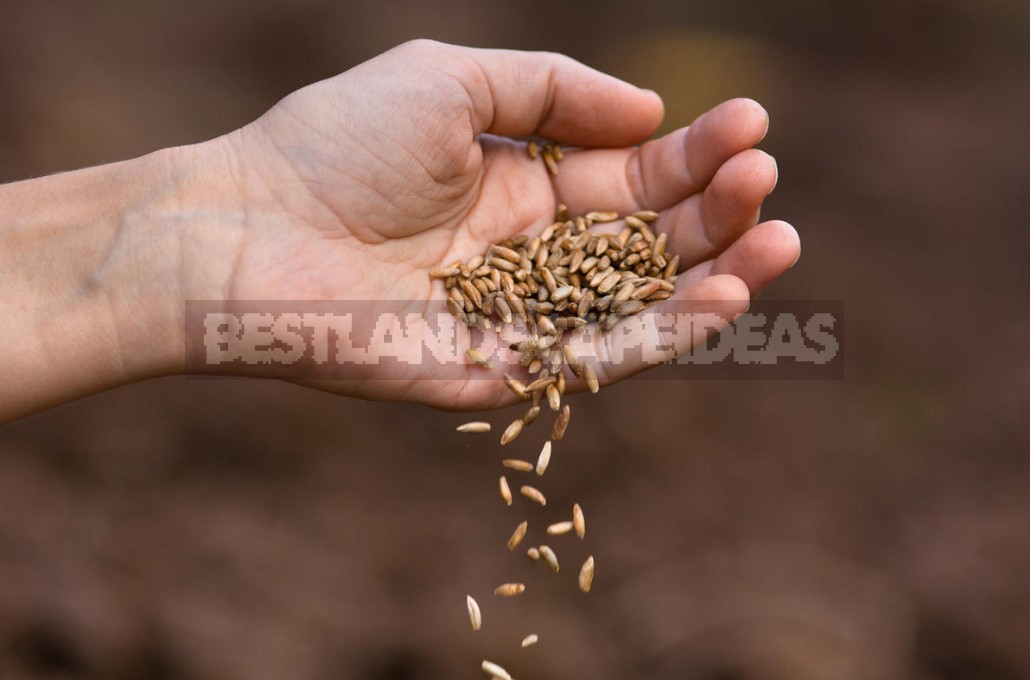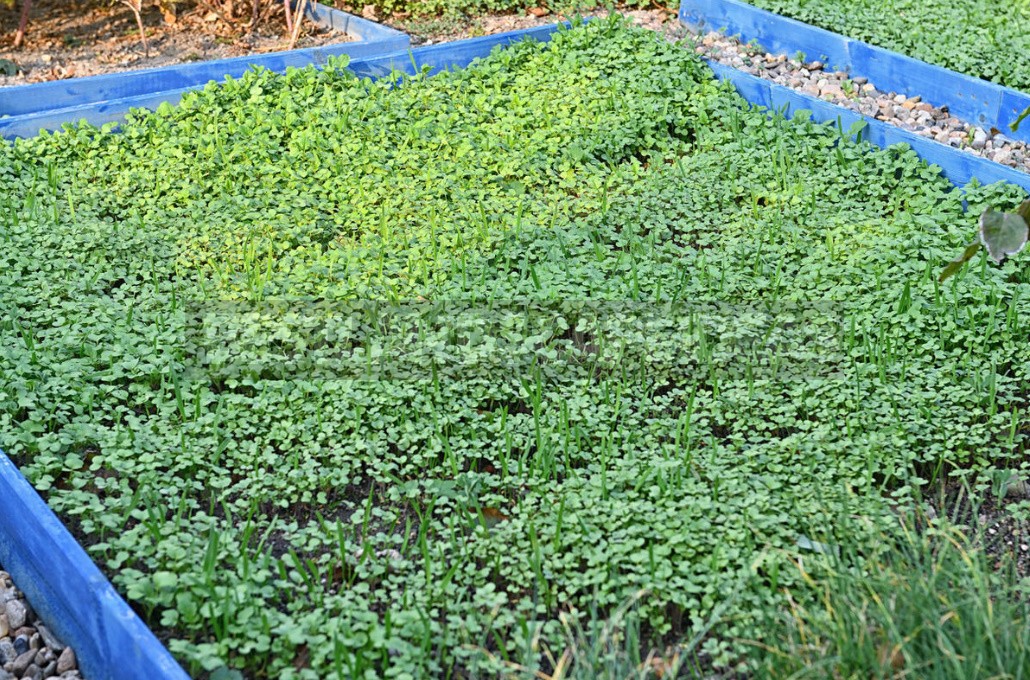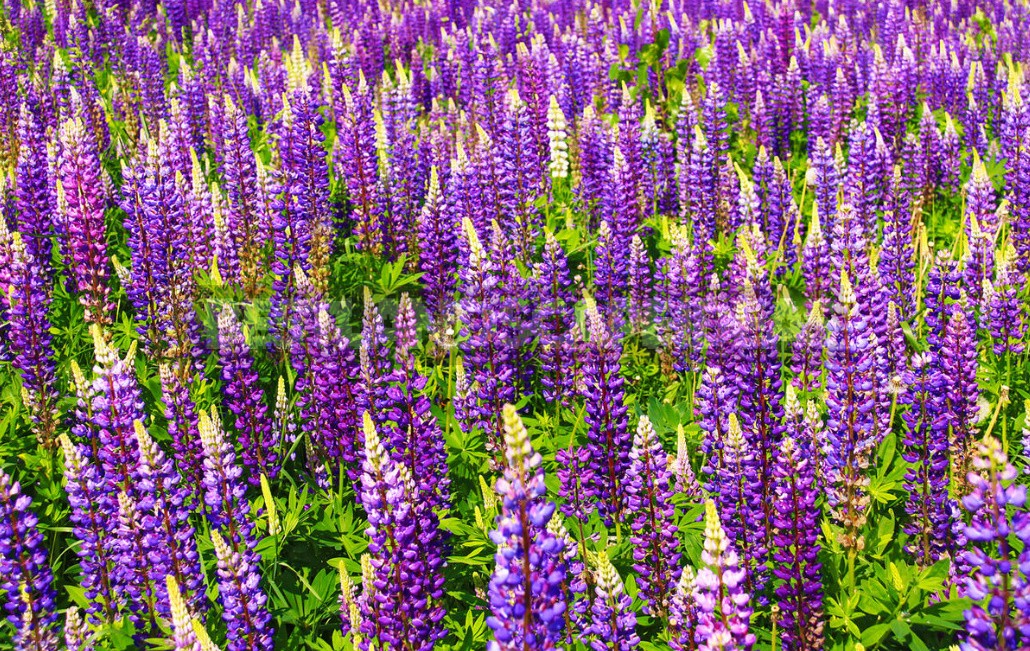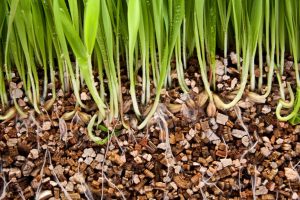
The sowing time of green manures
Green manures crops are sown on the site throughout the summer season. However, at different times, choose herbs, the characteristics of which correspond to the situation.
Spring sowing
In spring sowing, which is carried out in the earliest possible time, preference is given to cold-resistant crops. Wait for flowering in this case is not necessary: the grass is mowed and sealed in the soil when preparing the beds for planting.
Some gardeners use green manure crops of spring grass for additional protection of seedlings from the return of frost. To do this, among the thick grass, make holes and plant seedlings in them, and with the advent of sustainable warming, the green manures is cut and laid out here, on the surface of the bed, turning it into mulch.

Sowing in summer
Green manure grass, you can sow between rows of cultivated plants throughout the season. Many of them during flowering become beautiful honey plants, attracting to the beds a large number of insect pollinators, as well as suppress weeds. Some green manure crops help to repel pests and fungal diseases.
For example, sowing a mixture of oats or barley with a legume in the potato aisles can reduce the number of Colorado beetle and nematode. If tubers harm wireworm, it is better to use a mixture of Phacelia and Sinápis. But to green manures themselves do not have time to turn into green invaders, you need to have time to mow them before the seeds ripen.

Cabbage will develop perfectly in cooperation with any legumes. In addition to supplying nitrogen, they will help protect it from the nematode. But planted next to cabbage of cruciferous green manures should not be – they will attract common pests and increase the risk of fungal infections.
For all Solanaceae, the neighborhood of Linum and Calendula will be useful – they scare off the Colorado beetle. When infecting the site with a nematode, first of all it is worth remembering Secale cereale. Melilotus and Lupinus will also clear the site of this pest, as well as reduce the risk of root rot.

Phacelia will be a reliable assistant in the fight against late blight, root rot and wireworm. Oats, whose roots secrete compounds with fungicidal properties, will also add resistance to garden crops against rot. Tagetes will be an excellent nurse: he will fight not only soil pests, but also ground pests.
Autumn sowing
Many summer residents sow green manures as harvesting and the release of beds from the main culture, having time for the new season to spend 2 or more “turnover” and improving the quality of the soil in the garden. All that is required for green manures grass is periodic watering during the period of drought.
For summer and early autumn sowing suitable Brassica napus, Barbarea, Sinápis, a variety of legumes, as well as Phacelia and Fagopyrum esculentum. For sowing in the second half of autumn (before winter), you can use of cruciferous and leguminous green manure and a variety of cereals. In this case, the green mass that has managed to grow to snow does not need to be mowed down – it will act as a snow-retaining agent and protect the beds from severe freezing.

Green manures crops will help to revive the soil depleted by constant exploitation. To do this, the plot is sown with perennial plants and left to rest for several years. You can use annual crops. For example, my friend uses oats for this purpose. It waits for the ripening and fall of the grains, then mows the ground part and digs the soil. After rain or watering, a fresh batch of seeds germinates quickly and gives a new green cap.

Novice gardeners often perceive the sowing of green manures as useless additional hassle-the harvest is not collected from them. But if you at least once use this technique, you will immediately realize that it, on the contrary, greatly facilitates suburban activities. Magic green manures miraculously transform the soil on the site, allowing you to save time and effort on its processing, and help to achieve a generous harvest.
I advise you to be sure to make friends with green manure grass, because this new friend will replace a dozen old garden assistants and will become a reliable dacha companion. And if you are already familiar with green manures and use them on your site, share your impressions in the comments – your experience will charge the enthusiasm of beginners.




Leave a Reply